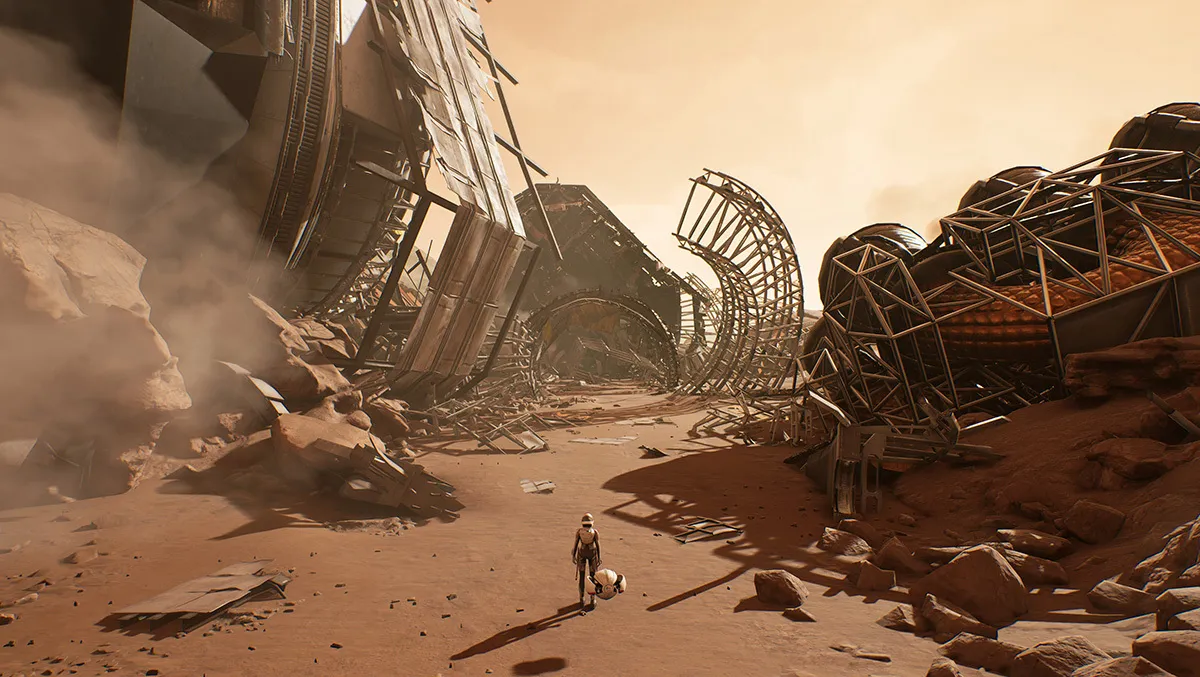
Game review: Deliver Us Mars (PC)
The follow-up to 2018's Deliver Us The Moon, Deliver Us Mars is more of the same sci-fi exploration and puzzle solving, this time on the red planet.
The first game dealt with a mission to the Moon to find out why the power that the Earth relies on, generated via lunar-sourced Helium 3, had been abruptly turned off. Players explored abandoned facilities solving puzzles that used gravity, air supply, power connections, and a handy wrist-mounted laser cutter to create a tense and rewarding gameplay experience.
Set a decade after the first game, Deliver Us Mars has players take on the role of Kathy, a character only mentioned in the audio logs in the first game. This is a more personal tale than the first game, with Kathy searching for her missing father, who is partially responsible for Earth's blackout and may well be alive on Mars. Cue more abandoned facilities that need to be explored to solve the mystery.
You don't have to have played the first game to play the second one. There's an in-game synopsis at the start that explains the key elements of Deliver Us The Moon. Even so, my recollection of the last game did somewhat contradict the beginning of this one.
Instead of a lone helmeted character with their face obscured, as in the first game (likely to keep the costs down), the developers have included fully-modelled human characters with facial animations. It's a step forward, but the faces do look a bit too cartoony in what is otherwise an almost photo-real game.
The game takes no shortcuts, fully immersing players in the flight to Mars. What could easily be a cut scene has players flicking switches, punching in vectors, and igniting stages. There is also a docking sequence and some other cool astronaut things to get the game going.
Being a more story-driven affair (with a larger budget, it would seem), there are more cut-scenes and flashback sequences. It arguably makes for a more profound experience but interferes with some of the purity, and puzzle-focused narrative simplicity of the first game, where listening to the expository audio logs was optional.
Whilst most of the game is set within Martian installations, players do get the chance to take in some rather spectacular and intricately detailed Martian landscapes, complete with huge abandoned facilities and equipment, some of which need to be traversed.
Kathy has a wrist-mounted laser cutter, the same as the protagonist of the last game, that she can use to cut open sealed doors or clear debris, as the game allows. She also has a pair of mountaineering axes for climbing softer rock faces and material, adding a new mechanic to the game.
The puzzles are quite logically incorporated into the game. Many of the puzzles involve powering equipment and doors using directable energy beams. There's also ducting that can only be accessed by Kathy's spherical robotic companion, which is operated remotely by the player in a third-person view, as needed.
Like in the first game, there are plenty of collectables and holographic recordings that reveal what exactly happened on Mars. Accessing the holograms is a puzzle in itself, requiring your robot to be positioned in the right place for the recording to be accessed.
The overall aesthetic of Deliver Us Mars is one of a believable space program with equipment and facilities that behave realistically. There are some necessary leaps required to explain away technological advances, but otherwise, this is a grounded sci-fi experience. It's more in keeping with the movie 2001 or the Apple TV show For All Mankind than some lazy space fantasy.
The game is visually stunning, if slightly let down by the character models. Other than that, the game shines on PC with support for ray-traced reflection and Nvidia's DLSS, all but guaranteeing good performance on even the most modest gaming PC.
Deliver Us Mars builds upon the first game offering a bit more plot, but retains the mystery and puzzle-solving that made its predecessor so good. This is a game for space buffs who will get a thrill out of the realistic way the game portrays interplanetary spaceflight and offers a glimpse into mankind's future exploration of space.
Verdict: 8.0/10


